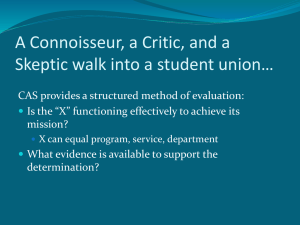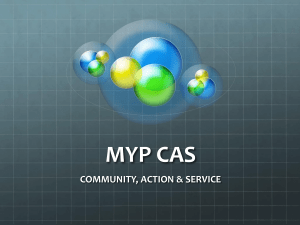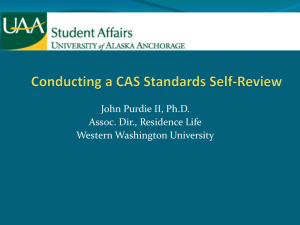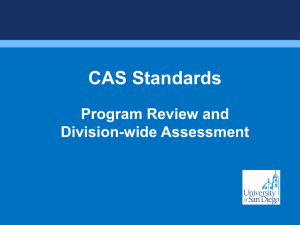Lecture Notes 3 - University of Illinois at Urbana
advertisement
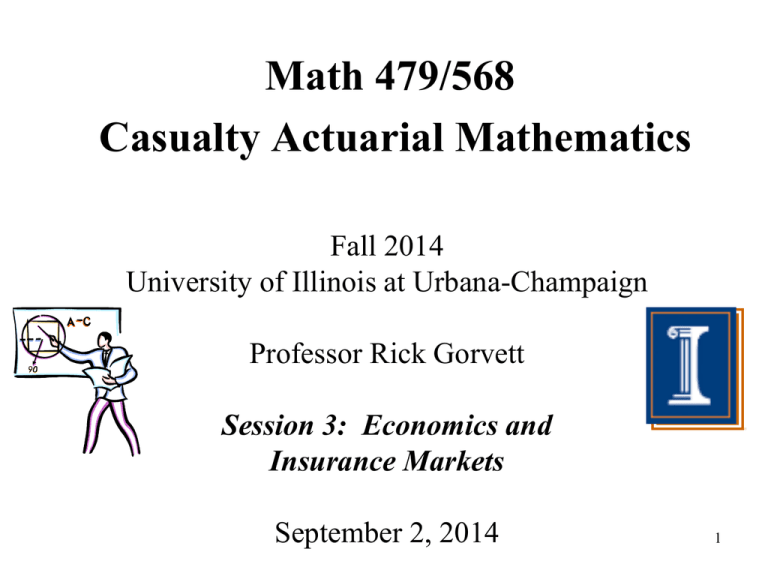
Math 479/568 Casualty Actuarial Mathematics Fall 2014 University of Illinois at Urbana-Champaign Professor Rick Gorvett Session 3: Economics and Insurance Markets September 2, 2014 1 Last Time • Insurance contracts • Lines of business • Insurability • Etc… 2 CAS Exam 5, Spring 2008, #1 3 CAS Exam 5, Spring 2008, #1 Sample Answer 4 CAS Exam 5, Spring 2008, #2 5 CAS Exam 5, Spring 2008, #2 Sample Answer 6 Today’s Agenda • Underwriting cycle • Macroeconomic approach to the cycle • Impact of the cycle on insurers and industry behavior 7 The Property / Casualty Insurance Underwriting Cycle 8 P/C Underwriting Cycle Profitability or Written Premium Growth Hard Time Soft 9 Insurance Information Institute Presentation: “Overview and Outlook for the P/C Insurance Industry: Trends, Challenges and Opportunities in 2014 and Beyond” http://www.iii.org/presentation/overview-andoutlook-for-the-p-c-insurance-industry-trendschallenges-and-opportunities-in-2014-and 10 A Macroeconomic Approach to the U/W Cycle (Boor, 1998) 11 Characteristics of the Insurance Market • Relatively fixed demand – Buy out of necessity • Required by law • Required by others • Protect against financial ruin – Thus, a relatively flat demand curve – Supply price 12 Characteristics of the Insurance Market (cont.) • Product is largely a “commodity” – Policies are similar (for a given line / type) • Regulation • Policy forms of bureaus – Individual sellers no control over price – Seek “brand names” • Differentiate policies • Different values associated with different policies 13 Characteristics of the Insurance Market (cont.) • Relatively easy entry and exit of firms – Entry • Capitalization and regulatory requirements • Not many expensive facilities needed (as compared with, say, manufacturing) – Exit • Perhaps regulatory issues • Perhaps marketing issues 14 Characteristics of the Insurance Market (cont.) • Supply curves – Different between companies • Underwriting • Expenses • Reserve management – Profitability may affect reserve levels – Reserves may be used to manage reported profitability 15 How These Characteristics Affect the Insurance Cycle • Commodity cycle – Suppose low supply (e.g., from low profits) – Raise prices; profits increase; firms enter excess capacity – Prices lowered; profits fall; firms exit low supply – Issues affecting length & severity of cycle • Accuracy of claim cost estimates • Reserving practices • Financial conditions 16 Impact of the Insurance Cycle on Insurers (Boor, 2004) 17 Soft Markets • Occur when aggregate written premium goal of all insurers is greater than aggregate insurance demanded – To reach volume or growth targets, companies begin dropping their prices – Other companies either follow or fail to meet their premium / growth targets 18 Soft Markets (cont.) • Price-reducing mechanisms – Rate filing requirements • Theoretically, can slow down falling prices • But: political and institutional realities – Company rating plans – Risk classification systems – Affiliated corporate entities 19 Hard Markets • Occur when aggregate written premium goal of all insurers is low relative to aggregate insurance demanded – Can result after poor financial condition of insurer(s) – Certain accounts cannot be written at desired terms – Inadequate capacity prices and profitability rise – Eventually, leads to new entrants 20 Issues • Leverage – Ratio of premiums to surplus – Increasing prices can lead to a higher ratio, contrary to regulatory guidelines • Degree of reserve adequacy – Can improve during hardening market – Impact on historical loss data used for prospective pricing 21 Issues (cont.) • Potential “cycle-changers” – Catastrophe loss experience – Financial conditions • Underwriting – Commodity market company cost structure is critical – Losses are the biggest component 22 Insurer Strategies with respect to the Insurance Cycle • Maintaining market share – Keep business – Drop / match prices as needed • Conserving capital – Insisting on profitable business – Maintaining infrastructure during soft markets 23 CAS Exam 5, Spring 2010, #13 24 CAS Exam 5, Spring 2010, #13 Sample Answer 25 CAS Exam 5, Spring 2010, #14 26 CAS Exam 5, Spring 2010, #14 Sample Answer 27 CAS Exam 5, Spring 2009, #14 28 CAS Exam 5, Spring 2009, #14 Sample Answer 29 CAS Exam 5, Spring 2009, #15 30 CAS Exam 5, Spring 2009, #15 Sample Answer 31 CAS Exam 5, Spring 2008, #42 32 CAS Exam 5, Spring 2008, #42 Sample Answer 33 CAS Exam 5, Spring 2007, #25 34 CAS Exam 5, Spring 2007, #25 Sample Answer 35 CAS Exam 5, Spring 2007, #26 36 CAS Exam 5, Spring 2007, #26 Sample Answer 37 CAS Exam 5, Spring 2005, #11 38 CAS Exam 5, Spring 2005, #11 Answer A. 1 only. 39 Next Time • Loss Reserving • A fundamental actuarial process • Chapter 5 of Foundations of Casualty Actuarial Science 40





